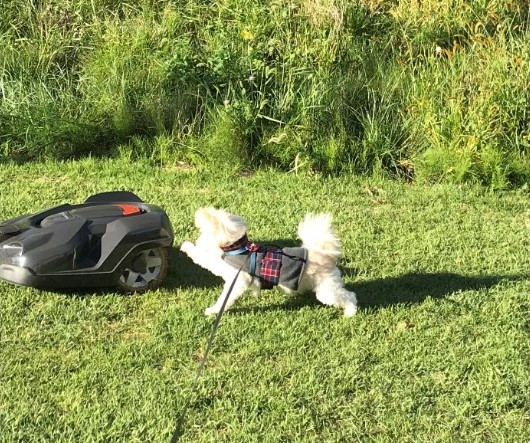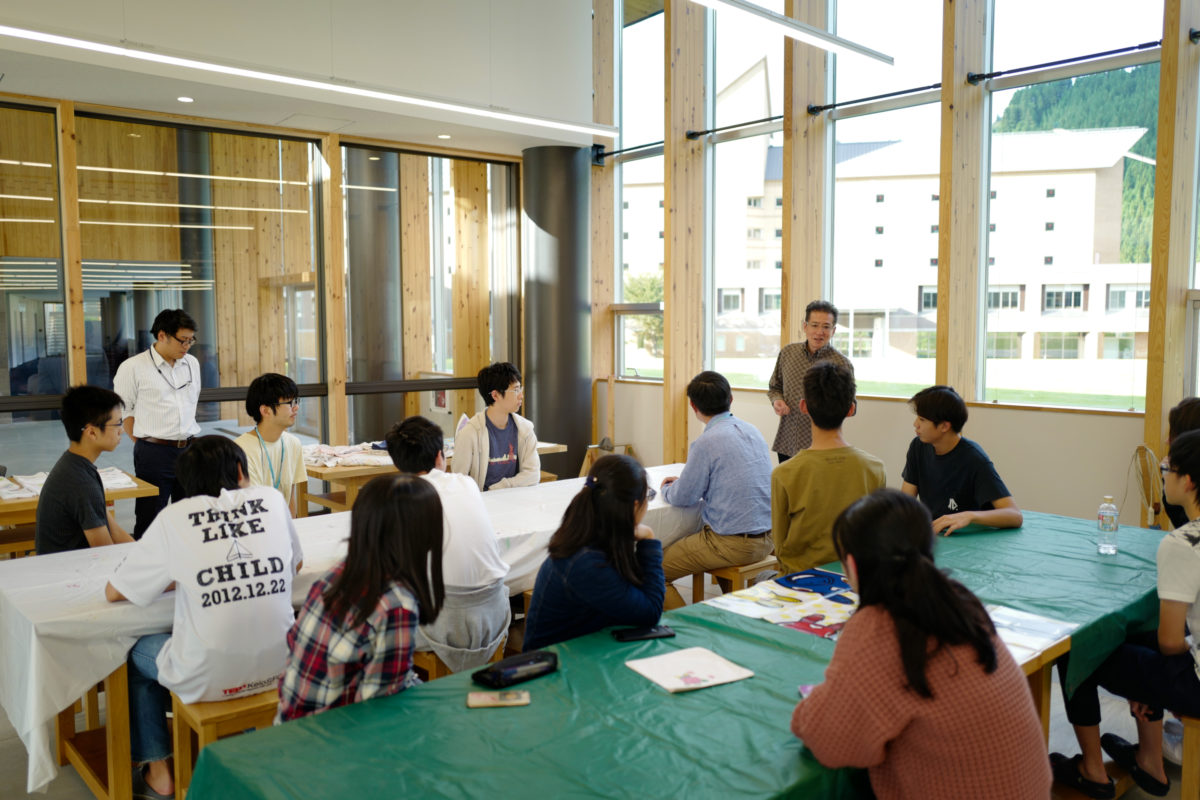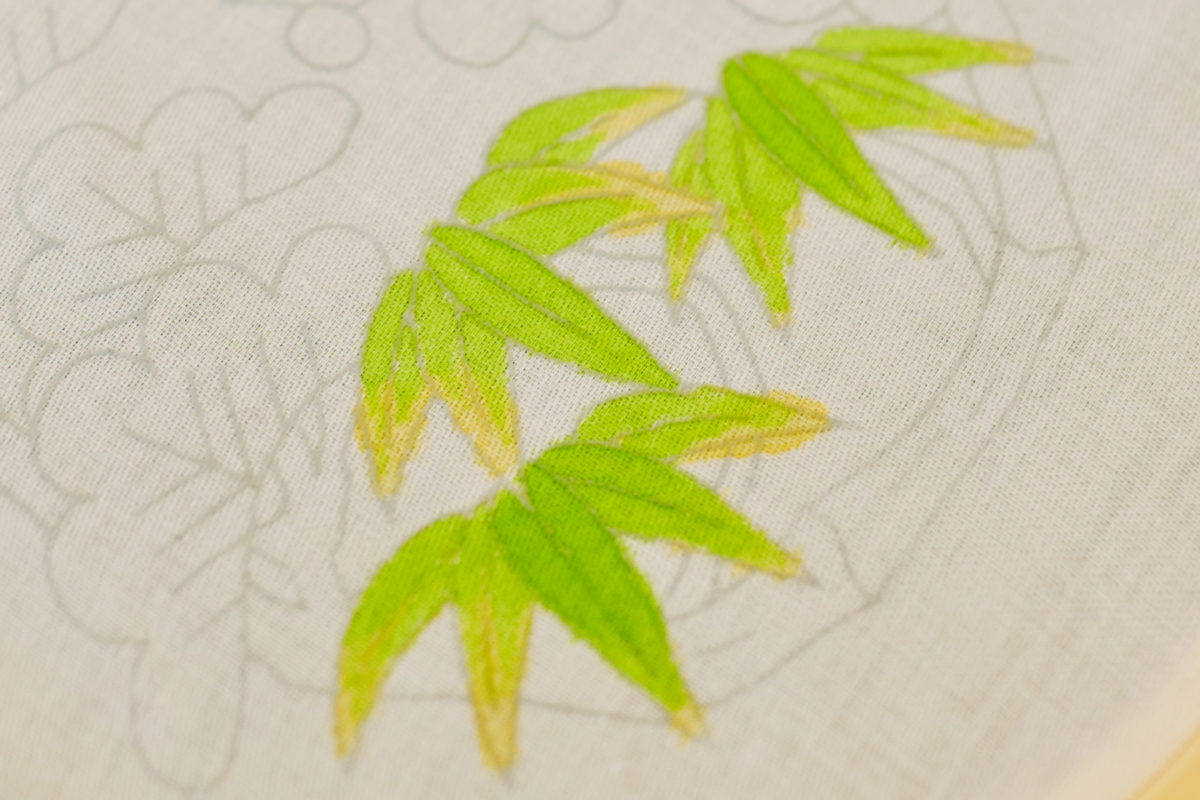 One day this semester, the school placed a roving avatar robot-like vehicle on the front lawn. It is quite interesting just to see it move up, down, and across the grass all day long. It operated peacefully, until Kobi, the resident, 10-year old maltese-pomeranian came along!
One day this semester, the school placed a roving avatar robot-like vehicle on the front lawn. It is quite interesting just to see it move up, down, and across the grass all day long. It operated peacefully, until Kobi, the resident, 10-year old maltese-pomeranian came along!
One September morning, Kobi and I went out for our walks later than 7:30 am, when the robot was in operation. As soon as he saw the machine, he bolted towards it.
When he caught up with it, he began trying to use his little paws to catch it. The machine kept moving. It was a sight to behold --dog versus machine. Not to be outdone, Kobi darted around to the left and to the right, touching it here and there. It was something to see.
I couldn’t let him off his leash for fear he may injure himself or wreck the machine but he could not get enough of playing with it.
I am not sure what the machine is meant to do, but I have been thinking. What if I learn some programming and what not? An what if I make a toy, the automated kind? What if the students help me? I think this is a good idea and what better place to do it than at ICT. Stay tuned!
Pauline Baird
2018年10月24日 コビ物語
最近、巡回するロボットような機械が白山麓キャンパスの正面の芝生に配置されました。一日中芝生の上を前後左右に動く姿は面白いです。それまでは平和に動いていたのですが、ある日、10歳のマルチーズ・ポメラニアン、コビに見つかってしまいました!
ある9月の朝、コビと私は、7時半と少し遅めの散歩へ出かけました。その時間帯、ロボットはすでに稼働していたのです。動く姿を見た瞬間、コビはロボットに向かってすっ飛んでいきました。
ロボットに追いつくと、まずは前足を使って捕まえようとしました。しかし、ロボットは動き続けます。見ごたえのある戦いでした。犬対ロボットの対決です。負けじとコビは右へ左へ、ロボットをところどころ触りながら走り回りました。皆さんにも見せてあげたかったです。
コビが怪我をしたり、ロボットを壊したりするのが心配で、リードをはずすことはできませんでしたが、コビは一向に遊ぶことに飽きる気配はありませんでした。
そのロボットが何のために配置されているのかわかりませんが、私がプログラミングを覚えたらどうでしょう?あのような自動で動くおもちゃを作ることができるでしょうか?学生は手伝ってくれるでしょうか?面白そうなアイデアですし、ここICTなら実現するかもしれません。続報を楽しみに!
ポーリン・ベアード
On Saturday, we held our follow-up Kaga Yuzen workshop in collaboration with Kobo Hisatsune. You can read about "Kobo Hisatsune" and our career design trip in Yamazaki sensei's journal from October 9. For our second workshop, Hisatsune sensei and staff visited us at the Hakusanroku campus.
The workshop began with students giving presentations on new ideas they came up with for Kaga Yuzen. There were many interesting ideas such as creating designs for license plates and glass corridors. Hisatsune sensei commented that "Experience comes with the tradeoff of flexibility. Fresh minds and ideas are always welcome."
In this workshop, students and teacher actually dyed a picture on a piece of fabric. The people of Kobo Hisatsune provided an assortment of designs to choose from as well as dyeing material. The pictures were outlined with thin lines that can be washed off with water after the coloring is complete.
At first, the cloths looked like white pages of a coloring book. However, we soon discovered that it was not that simple. First, the liquid dye soaks into the fabric, so it is difficult to sustain the colors inside the lines of the picture. Second, utilizing this characteristic is a fundamental technique in Kaga Yuzen; adding a second color for more depth of field or a realistic look. For example, the Kobo Hisatsune staff demonstrated how adding yellow to the tips of green leaves gave them a more natural look.
Each student used different colors and dyed the cloths differently. Even if they chose the same designed cloth, the pictures looked totally different. Hisatsune sensei remarked that he enjoys observing how everyone thinks and percepts color differently.
Kaga Yuzen dye does not come off with water. After rinsing the cloths and drying them, the color is permanent. After a couple of hours, everyone had their own Kaga Yuzen handkerchief.
Everyone seemed to enjoy the workshop and I hope it does not end here. Both sides promised to collaborate in the future, and I am looking forward to which ideas the students came up with may actually come true.
Jonathan
2018年10月18日 友禅染教室
土曜日、工房久恒との加賀友禅コラボレーション第2弾、友禅染教室が白山麓キャンパスで開催されました。前回のキャリアデザイン活動での工房訪問については、10月9日の山崎俊太郎先生の記事をお読みください。今回は久恒先生が白山麓キャンパスへ来て、学生と先生が参加できる教室を開いてくれました。
友禅染教室の前に、学生による「加賀友禅を若者達により広く理解してもらうための提言」の発表が行われました。加賀友禅デザインの車のナンバープレートや、加賀友禅空中回廊など、面白いアイデアがたくさんありました。久恒先生は「同じ道を長年やっていると経験と引き換えに固定概念が生まれてしまう。若者の柔軟なアイデアをぜひ参考にしたい」と語ってくれました。
続く友禅染教室では、学生と先生が、実際に白い生地に描かれた絵を染めることに挑戦しました。絵にはいくつか種類があり、参加者は気に入ったものを選んでいました。絵は薄い線が描かれており、完成したあとに水でゆすぐと消えるようになっています。
一見すると、ぬり絵に色を塗っているように見えますが、実際にはそれほど簡単ではありませんでした。まず、染料が布に染みるので、線の内側に色を留めるだけでも非常に気を使います。しかも、あえて染みさせてグラデーションを作ることによって奥行きや、本物らしさを表現する手法もあります。例えば、緑の葉っぱの先に黄色を加えるともっと自然に見えるのです。
学生は皆違う色を使って染めていました。同じ絵柄を選んだ者同士でも、染め方によってまったく違って見えました。「色の捉え方、考え方が人によって違うので、様々な発想を見ることができて面白い」と久恒先生が語ってくれました。
友禅染は水でゆすいでから乾燥させると色が定着します。全員無事にオリジナルの友禅染手ぬぐいが完成しました。皆、友禅染教室を楽しんでいたように見えました。工房久恒とのコラボレーション企画がこれで最後にならないように期待しています。近い未来、学生のアイデアが工房久恒との協力のもと、実現する日を楽しみにしています。
ジョナサン
Hakusanroku campus does not have a music class. However, as you can see, we are singing! Hello, it's Jonathan, the camera guy. Today, I would like to introduce our latest activity in the Performing Arts class.
In Performing Arts, students learn to express themselves through various mediums such as art and music. Currently, we are learning to sing under the instruction of Yuri Daikoku sensei, a professional vocalist and voice trainer. In the video, you can listen to the students singing "Do-Re-Mi" from the movie "The Sound of Music."
Daikoku sensei is a jazz singer, and we also sang classics such as "Fly Me to the Moon" and "Tennessee Waltz." For these songs, students and teachers took turns singing.
After the class, I asked Daikoku sensei about teaching music at ICT. She explained "It is different from teaching at a music school where all the students are already interested in singing. My major goal is to avoid any students disliking music. Also, I admire Hakusanroku campus' atmosphere. People enjoy expressing themselves freely."
Personally, I was surprised at how little hesitance the students showed singing in front of the group. There may be credit due to the teachers and atmosphere. However, I believe that they are definitely becoming individuals of high caliber.
Jonathan
2018年10月16日 歌で表現力を養う
白山麓キャンパスには音楽の授業がありません。しかし、ご覧のように本日は歌っています。こんにちは、ジョナサンです。今回はパフォーミングアーツの活動について紹介したいと思います。
パフォーミングアーツの授業では、音楽や芸術を通じて、発想力・表現力を養います。現在は、ヴォーカリストであり、ヴォイストレーナーの大黒友理先生の指導のもと、歌を通じて表現力を高める活動をしています。動画では映画「サウンド・オブ・ミュージック」の「ドレミの歌」を歌っている様子を聴くことができます。
大黒先生はジャズ歌手で、この授業では「フライ・ミー・トゥー・ザ・ムーン」や「テネシーワルツ」などの名曲も歌いました。これらの歌では、学生がひとりずつ前へ出て、順番に歌いました。
大黒先生にこの授業で意識している点を尋ねたところ、「すでに音楽に興味があってミュージックスクールに来る生徒を教えるのとは違う。1番意識しているのは音楽が嫌いにならないようにすること」「白山麓キャンパスの自由に表現できる雰囲気が素晴らしい」と語ってくれました。
個人的な感想として、人前で堂々と歌う学生がかっこよく見えました。先生の指導や雰囲気のおかげもあるかもしれませんが、表現力と同時に、器も大きくなっていると感じます。
ジョナサン
-
Learning the song 歌の練習中
-
Students divided into part パートごとに分かれました
-
Singing Together 一緒に歌いました
-
Composer and Yuri Daikoku (stage name) 指揮者と大黒友理先生(芸名)
Hello. It's Kihara, the first-year homeroom teacher. Today, I would like to introduce our math class at Hakusanroku campus.
Here at the Hakusanroku campus, there are four math teachers. Hazwan sensei, Alaa sensei, Steven sensei, who just joined us this month, and myself. Our nationalities are all different: Malesia, Egypt, America and Japan. Together, we teach math in English. Can you imagine taking a math class in English? Many people may picture their junior high school or high school math class and think "understanding lectures and solving problems in English sounds difficult." I agree. High school math is difficult enough in your first language. At Hakusanroku campus, we have math lectures in English. However, the time teachers use the blackboard and slides is less than half of the period. Most of the class is devoted to time where students teach each other and solve problems together. For example, the following question was created by our first-year students. Can you figure out the answer?
Calculate the following:
Lately, more and more students are writing their answers in English and speaking with the international teachers. It seems they are gradually adjusting to using English in math class. This class is different from simply sitting and listening to a teacher, or taking notes written on the blackboard and solving problems. If you are interested in this style, maybe ICT is the right school for you. Oh, by the way, the answer to the previous equation is 1. Did you solve it? See you.
Hitoshi Kihara
2018年10月12日
こんにちは。1年生担任の木原です。今回は皆さんに本校で行われている数学の授業を紹介します。
ここ白山麗キャンパスには数学の授業を担当している教員が4人います。私、ハズワン先生、アラー先生、そして10月から新しく着任されたスティーブン先生です。私以外は全員外国人で出身国もマレーシア、エジプト、アメリカと様々です。この4人の教員で数学を英語で授業をしています。さて、皆さんは英語で行われる数学の授業がどのようなものだと思いますか?「英語で数学の説明を聞いて理解するのは大変そう」、「英語で書かれた問題を解くのは難しそう」などなど、普段皆さんが中学校や高校で受けている授業がそのまま英語になった形を思い浮かべたかもしれませんね。もちろん、ここでも数学の内容を英語で講義する時間はあります。ただでさえ難しい高校数学の内容を英語で聞いて理解するのは、確かにちょっと大変です。ただ、このように教員が学生に黒板やスライドを使って説明する時間は授業全体の半分もありません。授業のほとんどの時間は、学生同士が問題を解き合ったり、説明し合ったり、教え合ったりしながら学んでいます。例えば以下の問題は今年の1年生が作成した問題です。皆さん、解けますか?

最近では、問題の解答を英語で書いたり、外国人教員に英語で説明したりする学生も増えてきました。少しずつですが、英語を使う、数学を使うということに慣れてきたようです。ここでの授業は、先生の説明を座って聞くだけ、黒板をノートに写すだけ、問題をとにかく解くだけ、などとはちょっと違うスタイルで行われています。このような授業のやり方に興味がある人は、この学校に向いているのかもしれませんね。そうそう、上の問題の答えは1です。解けましたか?それでは。
木原 均
On September 25, we took a special career design trip to Kanazawa. This time, we visited "Kobo Hisatsune", the workshop of Toshiharu Hisatsune, who is a successful Yuzen Artist in the field of Kaga Yuzen. Kaga Yuzen has a history of 500 years. Hisatsune sensei inherits its history and is an innovator of new styles and expression of Kaga Yuzen.
 At the Kobo Hisatsune workshop, Hisatsune sensei not only does Yuzen dying on kimonos, but also other material such as wood, gold leaf and Tennyo-no-Hagoromo (robe of angel). The workshop is constantly developing new Yuzen technology to express Yuzen art on mediums such as interior, chinaware, tea boxes, stage costumes, etc. An example can be seen on the wall of the Starbucks coffee shop in Korinbo 109 in Kanazawa city. His work has received praise both nationally and internationally.
At the Kobo Hisatsune workshop, Hisatsune sensei not only does Yuzen dying on kimonos, but also other material such as wood, gold leaf and Tennyo-no-Hagoromo (robe of angel). The workshop is constantly developing new Yuzen technology to express Yuzen art on mediums such as interior, chinaware, tea boxes, stage costumes, etc. An example can be seen on the wall of the Starbucks coffee shop in Korinbo 109 in Kanazawa city. His work has received praise both nationally and internationally.
In this career design trip, we first listened to a lecture from Hisatsune sensei on his life as a Yuzen Artist and the difficulties he overcame. Being an ordinary businessman most of my life, I was fascinated by his experience. Also, we had a chance to view his workshop and actually try the dying process using Hisatsune sensei's coloring materials. The students were nervous, but managed to successfully color the fabric.
I was interested in how the students felt about the experience. The next day I read their reports and was surprised at how much they had to say. On October 13, the Kobo Hisatsune staff will pay us a visit at Hakusanroku campus and conduct a Yuzen dying workshop. Both students and teachers are welcome and I am very excited to participate.
Dean of Research and Projects
Shuntaro Yamazaki
キャリアデザイン特別活動 「工房久恒」訪問
キャリアデザインを目的とした特別活動を9月25日に開催しました。今回は、500年の歴史を持つ加賀友禅の世界で、伝統工芸の継承と革新に挑戦し続ける友禅作家久恒俊治先生の「工房久恒」を訪問しました。
工房久恒は、着物の友禅染にとどまらず、木材や金箔、天女の羽衣などの新たな素材に友禅を描く技法を独自に開発、内装や食器、茶箱、舞台衣装などで新たな友禅の世界を創出しています。その一例として、金沢市内にあるスターバックスコーヒー香林坊109の店内装飾があります。こうした活動は、国内はもとより海外メディアでも取り上げられ、高い評価を受けています。
今回の特別活動では、久恒先生が歩んでこられた友禅作家としての人生、そして幾多の苦難を乗り越えてこられたご経験を講話をいただくとともに、実際の作業場の見学をさせていただきました。長年企業でサラリーマン人生を送った筆者からすると、とても刺激的て感動的なお話を伺うことができました。また、実際に久恒先生がお使いの絵具を使って染色作業を学生に体験させていただきました。ドキドキしながらの染色でしたが、失敗せずに染めることができてホッとしました。
今回の工房訪問は学生諸君の心にどう写ったか興味がありますが、翌日提出いただいた訪問レポートを読むと、皆さんそれぞれに感じるものが多々有ったようです。10月13日には、今度は「工房久恒」の皆様が、白山麓キャンパスにこられて、友禅染教室を開講していただく予定です。学生のみならず教職員も体験できるとあって、とても楽しみにしています。
研究プロジェクト主事
山崎俊太郎
































